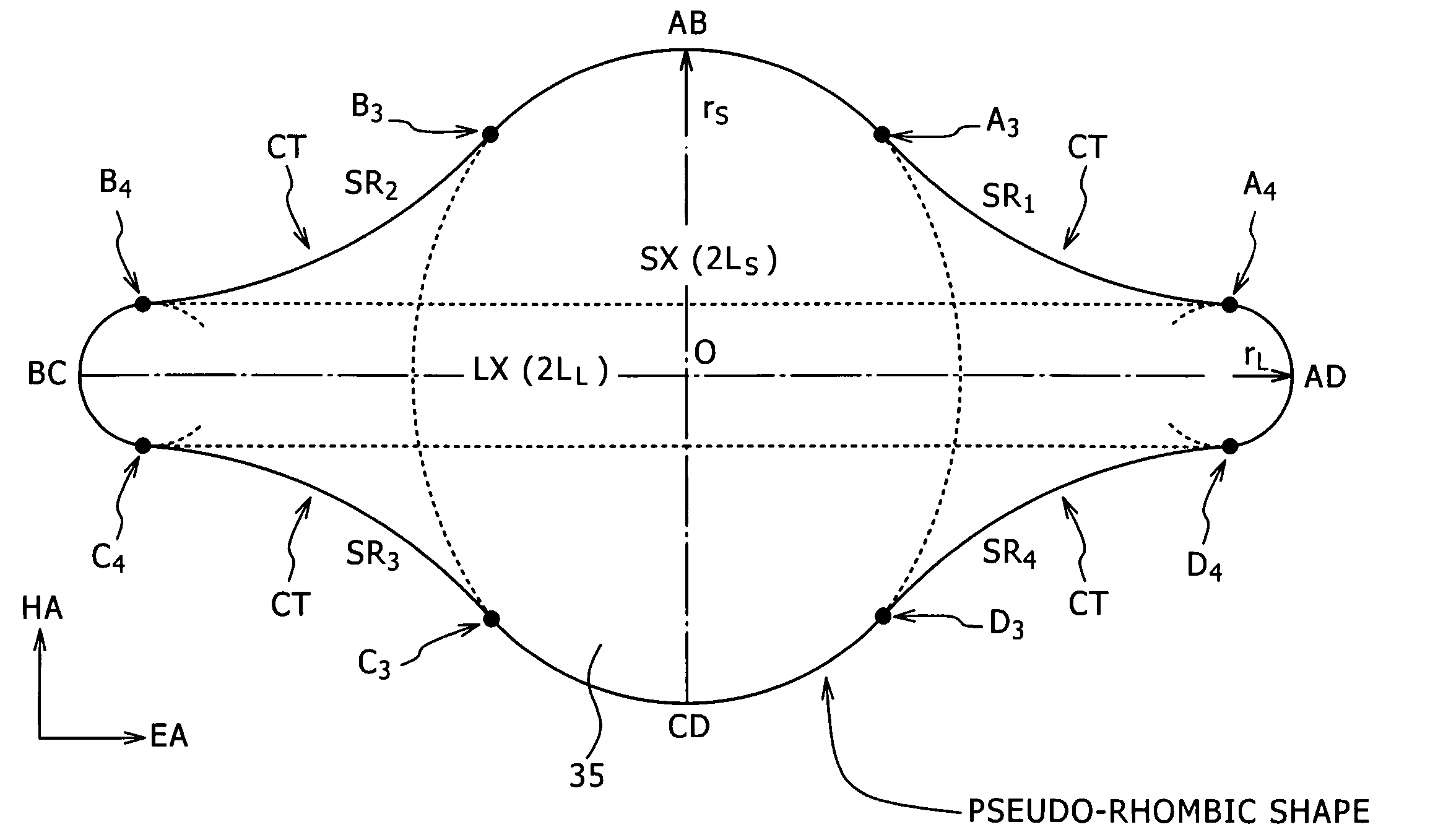Nonvolatile magnetic memory device and photomask
a magnetic memory and non-volatile technology, applied in solid-state devices, nanoinformatics, instruments, etc., can solve the problems of unsatisfactory adoption of such plan-view shapes, inability to realize large-capacity memory, and so on, so as to suppress the dispersions, and reduce the dispersion of the switching magnetic field hswitch
- Summary
- Abstract
- Description
- Claims
- Application Information
AI Technical Summary
Benefits of technology
Problems solved by technology
Method used
Image
Examples
example 1
[0211] Example 1 pertains to a nonvolatile magnetic memory device according to the first to fourth embodiments of the present invention. The nonvolatile magnetic memory device in Example 1 including a magnetoresistance device having a recording layer being formed of a ferromagnetic material for storing information by use of variation in resistance depending on the magnetization inversion state thereof, and is specifically a nonvolatile magnetic memory device including a tunnel magnetoresistance device using the TMR effect.
[0212] Here, in the nonvolatile magnetic memory device in Example 1 as the nonvolatile magnetic memory device according to the first embodiment of the present invention, as a schematic plan view of a recording layer 35 is shown in FIG. 1, the plan-view shape (indicated by solid lines) of the recording layer 35 has a pseudo rhombic shape having four sides SRm (where “m” is any of 1, 2, 3, and 4). The sides SRm indicate the portions of the plan-view shape of the rec...
example 2
[0297] Example 2 pertains to the nonvolatile magnetic memory devices according to the fifth to eighth embodiments of the present invention. The nonvolatile magnetic memory deice of Example 2 including a magnetoresistance device having a recording layer formed of a ferromagnetic material for storing information by variation in resistance depending on the magnetization inversion state thereof is also a nonvolatile magnetic memory device including a tunnel magnetoresistance device using the TMR effect, in the same manner as in Example 1. Incidentally, the tunnel magnetoresistance device TMJ and the nonvolatile magnetic memory device in Example 2 also have the same configurations and structures as those of the tunnel magnetoresistance device TMJ and the nonvolatile magnetic memory device in Example 1, except for the difference in the plan-view shape of the recording layer; therefore, the following description will be made only of the plan-view shape of the recording layer.
[0298] Here, ...
example 3
[0332] Example 3 pertains to a photomask according to the one embodiment of the present invention. The photomask in Example 3 is a photomask for use in a lithography step for forming the recording layer 35 described in Example 1 above. Specifically, the recording layer 35 is a recording layer constituting the magnetoresistance device in the nonvolatile magnetic memory device, the recording layer including: [0333] (A) a ferromagnetic material for storing information by use of variation in resistance depending on the magnetization inversion state thereof, [0334] (B) the plan-view shape of the recording layer being a pseudo-rhombic shape, [0335] (C) the four sides SRm constituting the pseudo-rhombic shape each including a smooth curve having a central portion thereof curved toward the center of the pseudo-rhombic shape, [0336] (D) the easy axis (EA) of the recording layer being substantially parallel to the longer axis LX of the pseudo-rhombic shape, [0337] (E) the hard axis (HA) of th...
PUM
 Login to View More
Login to View More Abstract
Description
Claims
Application Information
 Login to View More
Login to View More - R&D
- Intellectual Property
- Life Sciences
- Materials
- Tech Scout
- Unparalleled Data Quality
- Higher Quality Content
- 60% Fewer Hallucinations
Browse by: Latest US Patents, China's latest patents, Technical Efficacy Thesaurus, Application Domain, Technology Topic, Popular Technical Reports.
© 2025 PatSnap. All rights reserved.Legal|Privacy policy|Modern Slavery Act Transparency Statement|Sitemap|About US| Contact US: help@patsnap.com



